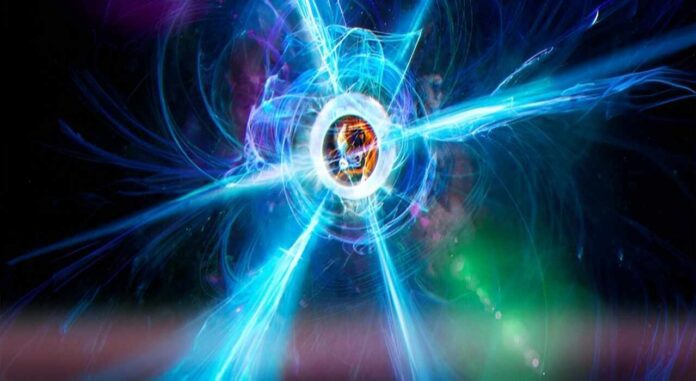The field of quantum physics is rife with paths leading to tantalizing new areas of study, but one rabbit hole offers a unique vantage point into a world where particles behave differently—through the proverbial looking glass.
Dubbed the “Alice ring” after Lewis Carroll’s world-renowned stories on Alice’s Adventures in Wonderland, the appearance of this object verifies a decades-old theory on how monopoles decay. Specifically, that they decay into a ring-like vortex, where any other monopoles passing through the center are flipped into their opposite magnetic charges.
Published in Nature Communications on August 29, these findings mark the latest discovery in a string of work that has spanned the collaborative careers of Aalto University Professor Mikko Möttönen and Amherst College Professor David Hall.
“This was the first time our collaboration was able to create Alice rings in nature, which was a monumental achievement,” Möttönen said.
“This fundamental research opens new doors into understanding how these structures and their analogs in particle physics function in the universe,” Hall added.
The long-standing relationship, titled the Monopole Collaboration, initially proved the existence of a quantum analog of the magnetic monopole in 2014, isolated quantum monopoles in 2015, and eventually observed one decay into the other in 2017.
Monopoles remain an elusive concept in the arena of quantum physics. As the name suggests, monopoles are the solitary counterpart of dipoles, which carry a positive charge at their north pole and a negative charge at the south. In contrast, a monopole carries only either a positive or negative charge.
While the concept sounds simple, realizing a true monopole has proven to be a career-defining task. Here’s how the Monopole Collaboration has done it: they manipulated a gas of rubidium atoms prepared in a nonmagnetic state near absolute zero temperature. Under these extreme conditions, they were then able to create a monopole by steering a zero point of a three-dimensional magnetic field into the quantum gas.
Laying theoretical groundwork
These quantum monopoles are ephemeral by nature, decaying a few milliseconds after their creation. It is within this instability that the Alice ring takes shape.
“Think of the monopole as an egg teetering at the top of a hill,” Möttönen said. “The slightest perturbations can send it crashing down. In the same way, monopoles are subject to noise that triggers their decay into Alice rings.”
While monopoles are short-lived, the research group simulated stable Alice rings for as long as 84 milliseconds—over 20 times longer than the monopole lifespan. This leads researchers to be optimistic that future experiments will reveal even more peculiar properties of Alice rings.
“From a distance, the Alice ring just looks like a monopole, but the world takes a different shape when peering through the center of the ring,” Hall said.
“It is from this perspective that everything seems to be mirrored, as if the ring were a gateway into a world of antimatter instead of matter,” Möttönen added.
In theory, a monopole passing through the center of an Alice ring would be transformed into an anti-monopole of opposite charge. Correspondingly, the Alice ring’s charge would change as well. While this phenomenon has not yet been experimentally observed, Möttönen said the topological structure of Alice rings necessitates this behavior.
The experimental work was conducted at Amherst College primarily by Ph.D. candidate Alina Blinova and Hall, while Möttönen and his team were responsible for running matching simulations. This way, the two teams were able to confirm the interpretation of the experimental observations.
“It is simply amazing to have such a major discovery as the finale of my Ph.D. work,” Blinova said.
Reference:
Alina Blinova et al, Observation of an Alice ring in a Bose–Einstein condensate, Nature Communications (2023). DOI: 10.1038/s41467-023-40710-2
